Dark patterns: interfaces designed to cheat

Harry Brignull is a freelance UI designer from London with a Ph.D. in cognitive science. He is also known as the creator of the Dark Patterns website , designed, he said, to “enumerate and ridicule websites that use deceptive user interfaces”. This article is based on a presentation he showed in Munich in April at the Search Marketing Expo.
The article has been translated and published with the consent of the author .
When Apple released iOS 6, one of the new features was the Identifier for Advertisers (IDFA) ad tracking system, which was not too announced by the company. It assigns a unique identifier to each device, which is used to track browser activity and create targeted ads. IDFA is anonymous, but not acceptable to people who care about privacy.
Fortunately, Apple has implemented the ability to disable features.However, you will not find the switch in the privacy settings. Instead, you have to go through a series of obscure options in the general settings menu. In addition, “General” is a lousy name for a menu item. Basically, this is a set of different garbage, which they did not know where to put it. In the "General" menu, select "About". At the end of this menu, under the terms of use and license points, there is an “Advertising” item.
If you haven’t come here, the only option in the ad menu, “Limit Ad Tracking,” is probably set to “Off.”
Let's take a closer look at the wording. She doesn’t say “Ad Tracking - Off,” she says “Limit Ad Tracking - Off.” Twice no. Tracking is not limited, so when the switch is off, tracking is actually on. Off means on!
This is a great example of what I call a dark pattern.
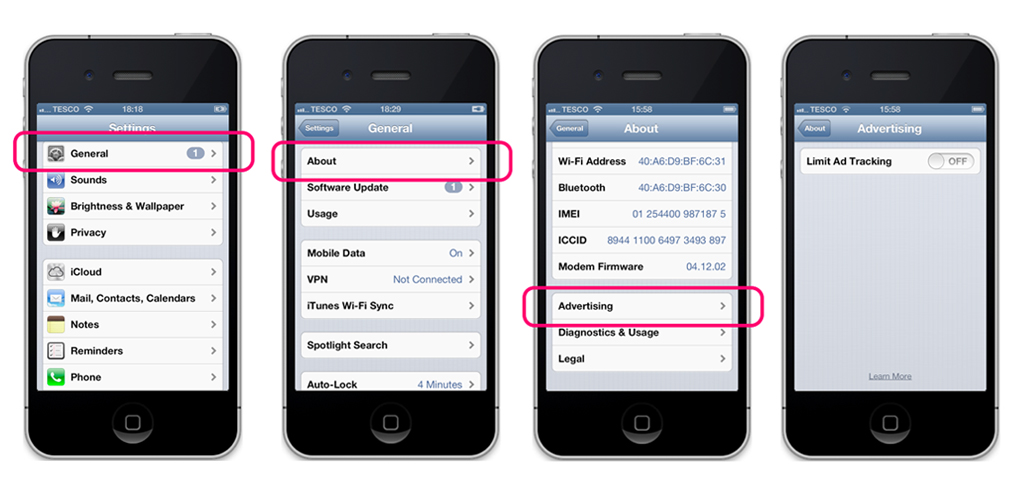
What is a dark pattern?
A dark pattern is a user interface that has been carefully designed to trick users into forcing them to do something that they would normally not do. For example, the acquisition of insurance upon purchase or the signing of recurring bills. When you meet poor design, you usually imagine its creator as a lazy or careless person without malicious intent. Dark patterns are not mistakes. They are thoroughly thought out with a clear understanding of human psychology, and they do not take into account the interests of the user.
The interesting thing is that dark patterns are designed based on exactly the same rules that can improve usability.
The 10 Nielsen heuristics are probably one of the most famous sets of usability tips. They were created in the early 90s. If we select three tips and invert, we can describe the strategy for creating the Apple user interface for the example above.
[Note translator: heuristics were published on habrahabr, but without attribution habrahabr.ru/post/75213 ]
Visibility of the state of the system . Instead of displaying key status information, it should be hidden. This can be done using slurred tags, stupid navigation and untimely messages.
Equality between the system and the real world . Instead of “talking to the user in his language”, the system should use “meandering language”, saying one thing and implying a completely different one.
Freedom of user action . Instead of giving freedom, we will use the user's natural ability to make mistakes. To achieve your goal, you should force the user to "randomly" perform the necessary actions.
Deceiving questions
Promotional emails use this tactic all the time. You may have already come across this. After registering on the site, you are asked if you want to subscribe to the mailing list. This approach is quite common, but it is very inefficient due to the need for an explicit action for the subscription. There is a possibility that users will be in a hurry and someone will not even notice this text. Some sites use mandatory switches without the selected option by default (on / off). Thus, the user will not be able to go to the next page without making an explicit choice. At first glance, there is no dark pattern in such a trick. It is worth returning to the principles of anti-usability. The choice can be made by deceit for us, without focusing on it.
For example, the site post-office.co.uk does not focus on options, in the hope that you will be signed by mistake. Here, a checkmark means "no." Pretty tricky, because usually a tick confirms something.
The mailing list is definitely expanding thanks to the hasty people who do not read the text. On the one hand, it works - they have accelerated the pace of the subscription. However, some people will gnash their teeth, realizing that the site has cheated them. This probably will not force them to change the provider, but will lower its rating in the eyes of users.
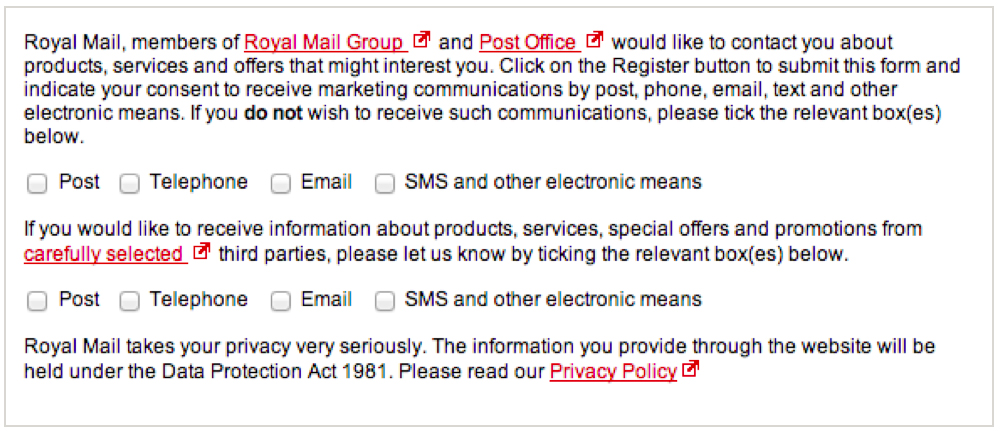
royalmail.co.uk goes one step further. Two rows of flags: the first for unsubscribing, the second for signing.
Have you heard of a multi-walled network?
This is a type of fishing net made of two layers of mesh of different types. A fish - or your user - can fall into the first layer, into the second, or get stuck between two layers. Such networks are prohibited in most cases, commercial fishing, but you can easily arrange them in your interface without any legal consequences.
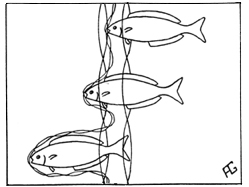
All of these examples are just tiptoeing around the problem. It is possible to go to another level entirely and get rid of uncertainty at all.
Quora does not currently play with any type of subscription or question. They simply list you according to the rules of use. This is what you see when registering - if you have time to go to the email notification page.
There are now 35 types of email notifications. You are automatically subscribed to the majority.
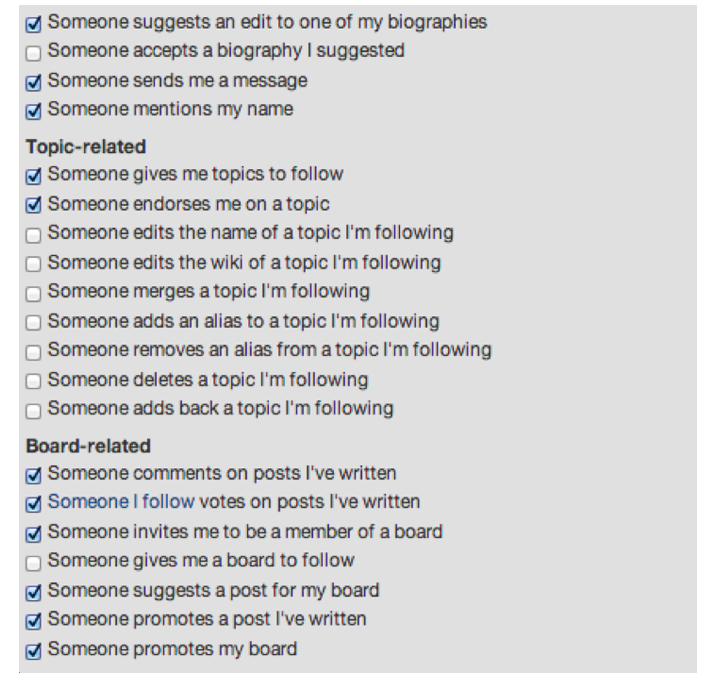
We conclude: although playing such tricks is quite easy, they make users angry. It is useful to think about the interaction of your brand with users from a human point of view.
Force account renewal
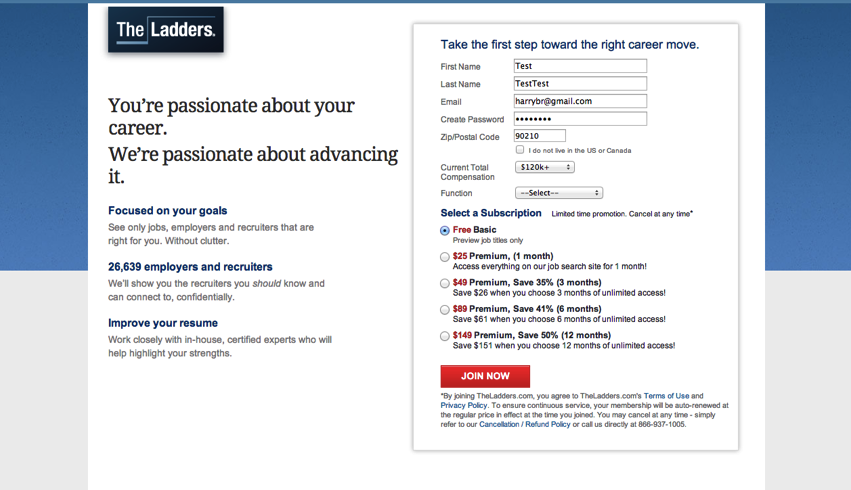
Let's move on to the next dark pattern.
theladders.com is a fairly large job board founded 9 years ago in the USA. They employ about 400 people, and annual income is already about $ 100 million dollars. Funded by venture capital.
What I'm going to talk about now is pretty unpleasant, so please check it out yourself and let me know if I'm wrong. In any case, let's register a simple free account.
It would seem that I'm getting a free account - what could go wrong?

Next, I go through several registration steps and look for work. Here are the search results. Let's say the second sentence looks attractive to me.
Here the first strange thing is revealed: the text cannot be selected. The site has disabled this feature using JavaScript. Most users will not think about this, so let's leave this thought and click on the title of the work to get more information and submit a resume.
A second ago I clicked “apply”, expecting to see details about the work and the submission form. Instead, I see a paid access banner saying that I have to upgrade my account to submit a resume!
At the moment, I do not know that this offer is freely available anywhere else on the network.
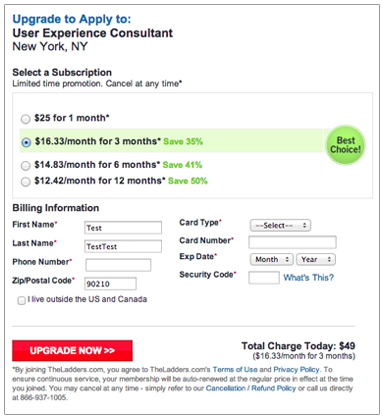
Suddenly disabling text highlighting makes sense. They want to discourage people from getting around the paid access banner by copying job descriptions and finding them on Google. They don’t want people to find the real source of the ad. In this case, the work was published on Bloomberg's careers website, where you can send your resume for free.
I did not consider a large number of ads, but a superficial analysis gives similar results: many ads behind the banner of paid access can be found elsewhere on the network at no cost.
WHO IN A HEALTHY MIND GOES TO THE ACCOUNT SETTINGS PAGE?
Pretty tricky, but forced renewal doesn't work until you start registering. The premium account page clearly reports its cost (from $ 25 per month to $ 150 per year), but it is obscured by the fact that the one-month subscription is automatically renewed, displaying this information with a gray 10m drop on a gray background at the bottom of the page. Once registered, you need to find the membership page (in your account settings) to disable this behavior. As confusing as the IDFA settings in iOS.
Astray
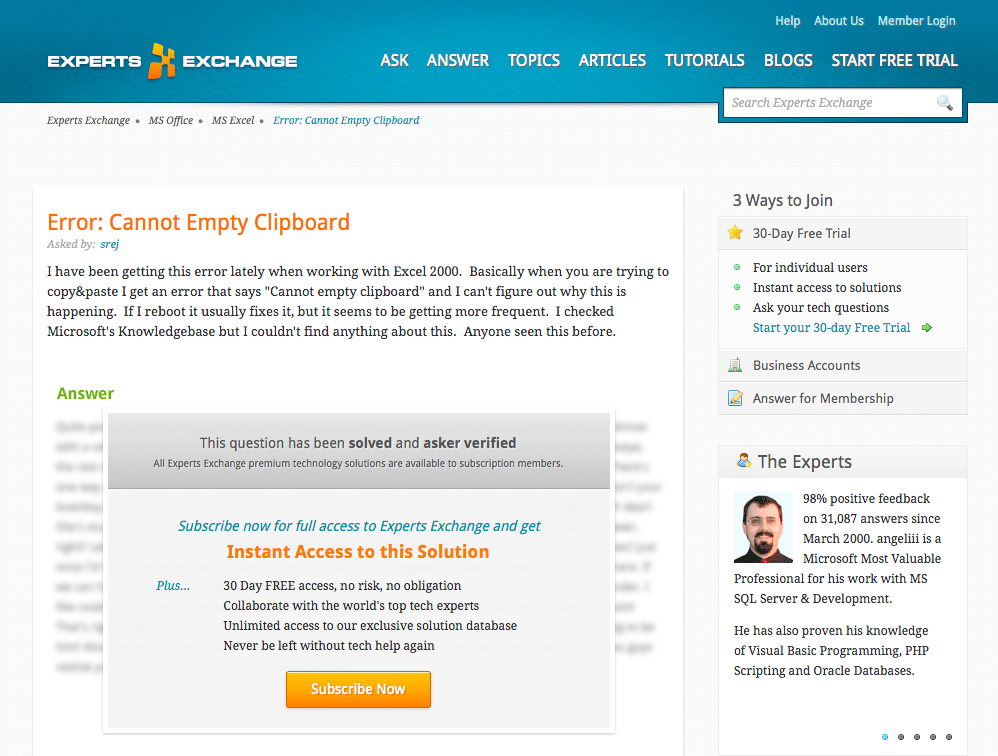
Last pattern: straying from the path. Imagine that you are looking for “I cannot clear the clipboard in Excel” and come to the Experts Exchange page.
It seems to you that the answer is behind the banner of paid access - this is how the page is designed. In fact, the answer is much lower - at the very end of the page.

This trick is useful for SEO and at the same time trick users into subscribing. They’ve been doing this for years - since 2007.
A case in point: using dark patterns as part of a growth strategy, you are unlikely to be afloat for long. Experts Exchange could still be the dominant force, but this is no longer the case. They became greedy, used dark patterns, and everyone got tired of it. Users have gone to a more friendly and ethical competitor.
It is very simple to be distant from users and depersonalize them if you see only a gray mass in them. To understand the reality of the user should zoom in.
Good design - and good business - is empathy with others. The idea is not limited to business, such is society as a whole. That is what makes us human. To understand the impact of your design, you must work at the human level. You need to see the eyes of your users and their facial expressions. That's all.
In the end, you have to evaluate what you need from users. Do you want them to simply use your service, or do you need more?
Personally, I think that only use is cheap. A good brand is desirable. Great brand love and respect. You will never achieve this if you use dark patterns.
[Note. All examples are relevant at the beginning of 2013.]
[Note. translator. I will gladly accept comments on translation, typos, and stylistics. It will be interesting to hear your examples of dark patterns]
